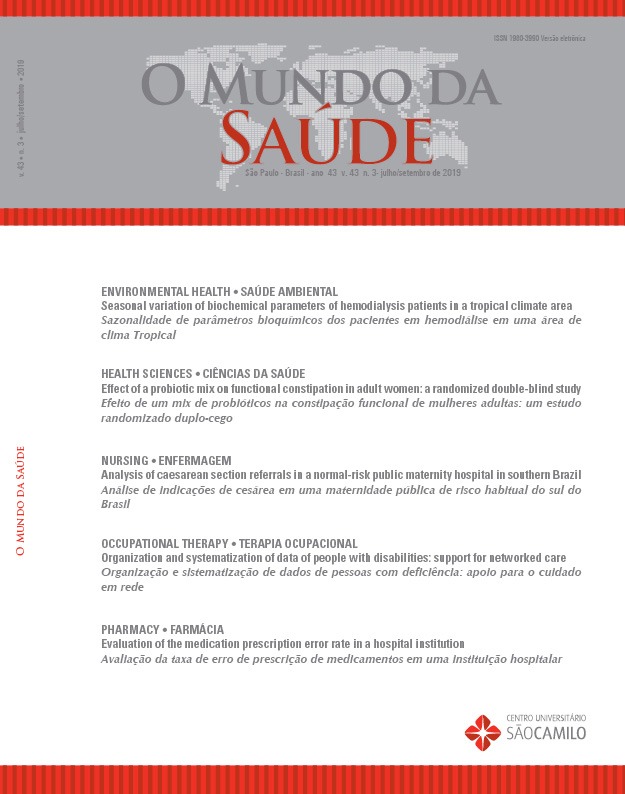Organization and systematization of data of people with disabilities: support for networked care
DOI:
https://doi.org/10.15343/0104-7809.20194303713731Keywords:
People with Disabilities, Continuing Health Care Network, Information Systems, Primary Health Care, Rehabilitation ServicesAbstract
The integral care of people with disabilities is weakened by the non-organization and systematization of information. The objective of this study was to organize and systematize data of people with disabilities accompanied in municipal health services in the context of primary and mild complexity care, in São Paulo capital, concerning socio-demographic profile, access to professional care and aiding equipment and service accessibility. It also aimed to establish an association between sociodemographic aspects and types of disability. Qualitative, retrospective, exploratory, descriptive and documentary research were based on analyses of users’ medical records and data from local health information systems. Information was collected on 166 people, 89 men (53.6%) and 83 (50%) adults between 19 and 59 years old; 44 (43.1%) users completed or did not complete elementary school. Of the 102 people who reported employment status, 38 (37.3%) were not working and among those who worked, 22 (41.5%) were men. Multiple disabilities (33.4%), physical disabilities (24.5%) and intellectual disabilities (21.6%) were recorded more often. A statistical association (p=0.005) was identified between age and type of disability, where physical disability was the most frequent among those between 6 and 14 years, and multiple disability was associated among the elderly. In primary care, users predominantly accessed doctors and nurses, and in mild complexity care, they contacted occupational therapists, physiotherapists and psychologists. Among the equipment, the use of wheelchairs prevailed. Architectural barriers were observed in services of mild complexity and there was a low offer of public transportation. There is a need to improve recording information, however it was possible to organize data on the part of people with disabilities, a fundamental action for networked care.






























